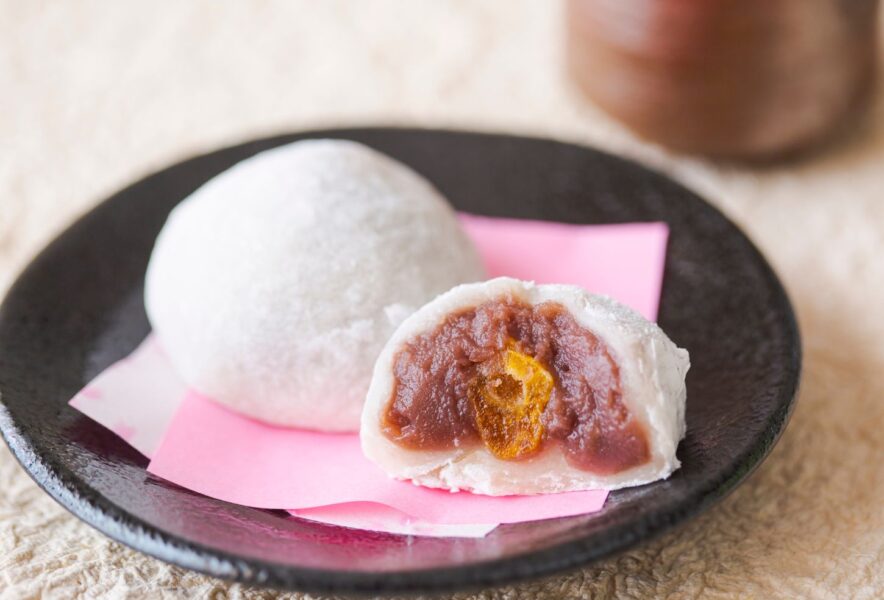Manju is one of Japan’s most beloved traditional sweets, a soft steamed bun filled with sweetened red bean paste, known as anko. In Tokyo, there are countless places to savor this iconic Japanese dessert, each offering unique varieties and flavors. Whether you’re strolling through traditional districts or exploring modern bakeries, this guide will help you discover the best manju Tokyo has to offer.
What is Manju? Japan’s Traditional Sweet Bun
Manju is a classic wagashi (traditional Japanese confection) made from flour-based dough filled with anko or other sweet pastes. The dough is usually steamed or baked, resulting in a fluffy or slightly chewy texture. It’s simple yet satisfying and is often paired with green tea or hojicha to balance its sweetness.
Though red bean paste is the most common filling, modern variations also feature flavors such as matcha (green tea), chestnut, and even white bean paste.
The History of Manju: From China to Japan’s Favorite Wagashi
Manju’s roots can be traced back to China, where steamed buns known as mantou were originally filled with meat or vegetables. When this dish was introduced to Japan in the 14th century, it evolved to fit Japanese tastes, with sweet fillings replacing savory ones. Over time, manju became a staple of Japanese tea culture and is still widely enjoyed during traditional ceremonies or casual tea breaks.
In Edo-period Tokyo, manju became particularly popular among common folk, and its simple ingredients made it an accessible treat for everyone. Today, manju is seen in both traditional and modern forms, representing a key element of Japanese culinary heritage.
Popular Varieties of Manju: From Classic Anko to Modern Flavors
In Tokyo, you can find a wide array of manju, from the classic steamed varieties to more contemporary takes. Here are some of the most common types you’ll encounter:
- Koshian Manju: Filled with smooth red bean paste, this is the classic version of manju.
- Tsubuan Manju: For those who prefer texture, this type contains chunkier red bean paste with bits of whole beans.
- Matcha Manju: A modern twist, these buns have a hint of green tea flavor mixed into the dough or filling.
- Chestnut Manju: Typically a seasonal treat, this manju is filled with sweetened chestnut paste and is particularly popular in autumn.
- Yaki Manju: These buns are baked instead of steamed, giving them a firmer exterior with a slightly caramelized taste.
How to Best Enjoy Manju: Pairing with Japanese Tea
Manju pairs beautifully with a variety of Japanese teas. Here are some of the best combinations:
- Green Tea: The bitterness of matcha or sencha balances out the sweetness of manju, making it an ideal pairing. Whether you’re enjoying a koshian manju or a matcha-filled variation, green tea will enhance the overall experience.
- Hojicha: With its roasted and slightly smoky flavor, hojicha is another great option, especially when paired with baked or chestnut manju. The warmth and subtle sweetness of the tea work in harmony with the filling.
- Genmaicha: The nutty flavor of roasted rice in genmaicha complements the earthy sweetness of red bean paste, providing a comforting combination.
Best Manju Shops in Tokyo: Where to Savor This Traditional Sweet
Tokyo is home to many renowned wagashi shops that specialize in manju. Whether you’re seeking a traditional experience or a contemporary twist, these are some of the must-visit spots in the city:
- Toraya (Ginza & Multiple Locations)
Official Website
Toraya is one of Japan’s most prestigious wagashi shops, with a history dating back over 500 years. Their manju is made with premium ingredients, and the smooth anko filling is renowned for its refined taste. Don’t miss the chance to try their seasonal varieties. - Tsuruya Yoshinobu (Tokyo Midtown)
Official Website
This Kyoto-based shop brings a delicate touch to Tokyo’s wagashi scene. Known for their beautifully crafted sweets, Tsuruya Yoshinobu offers manju that reflect both tradition and artistry. Be sure to try their seasonal offerings, which change throughout the year. - Aono Sohonpo (Akasaka)
Official Website
Established in 1899, Aono Sohonpo is famous for its variety of manju, including their signature akasaka-mochi. Each bun is made with care, using time-honored techniques to ensure a consistent and high-quality product. - Kameya Mannendo (Multiple Locations)
Official Website
Kameya Mannendo offers a mix of traditional and modern manju. With locations throughout Tokyo, it’s easy to stop by and try their famed navona (a manju-like confection) alongside other classic manju varieties.
Whether you’re a fan of traditional sweets or eager to try something new, Tokyo’s manju scene offers a diverse selection that caters to all tastes. From refined flavors at long-established wagashi shops to convenient treats found in modern bakeries, this iconic sweet is a must-try for any visitor to the city.

Comment